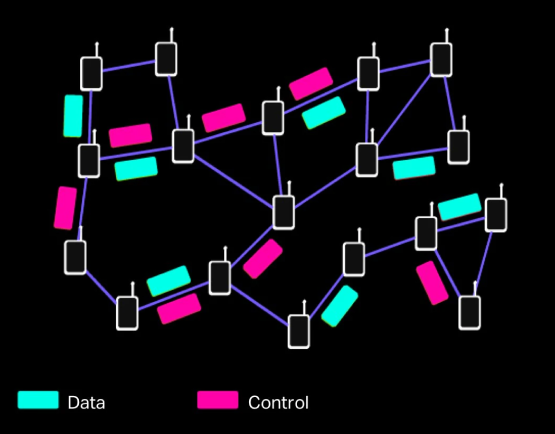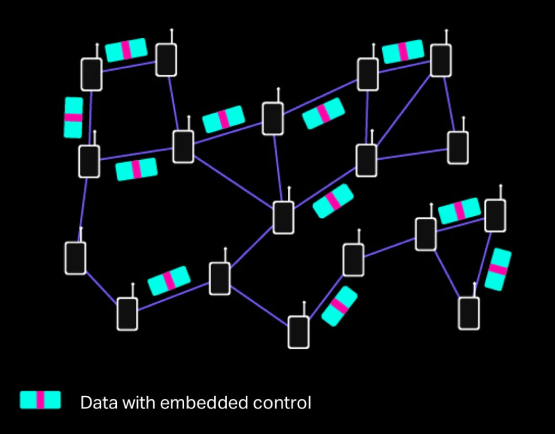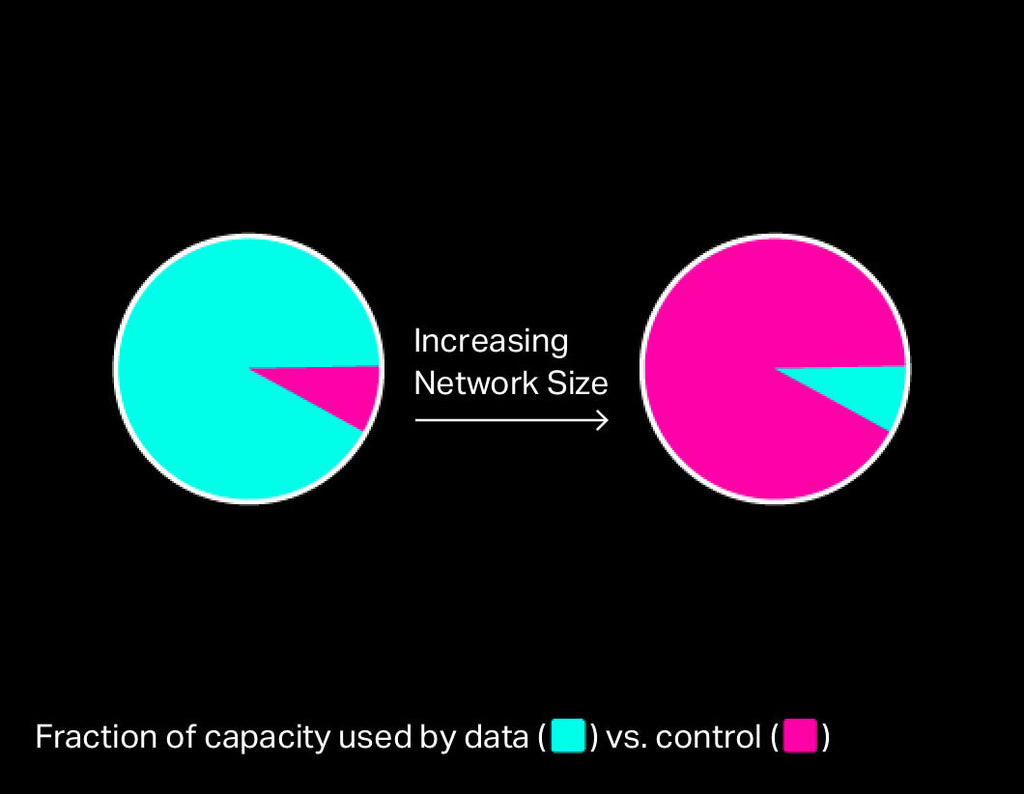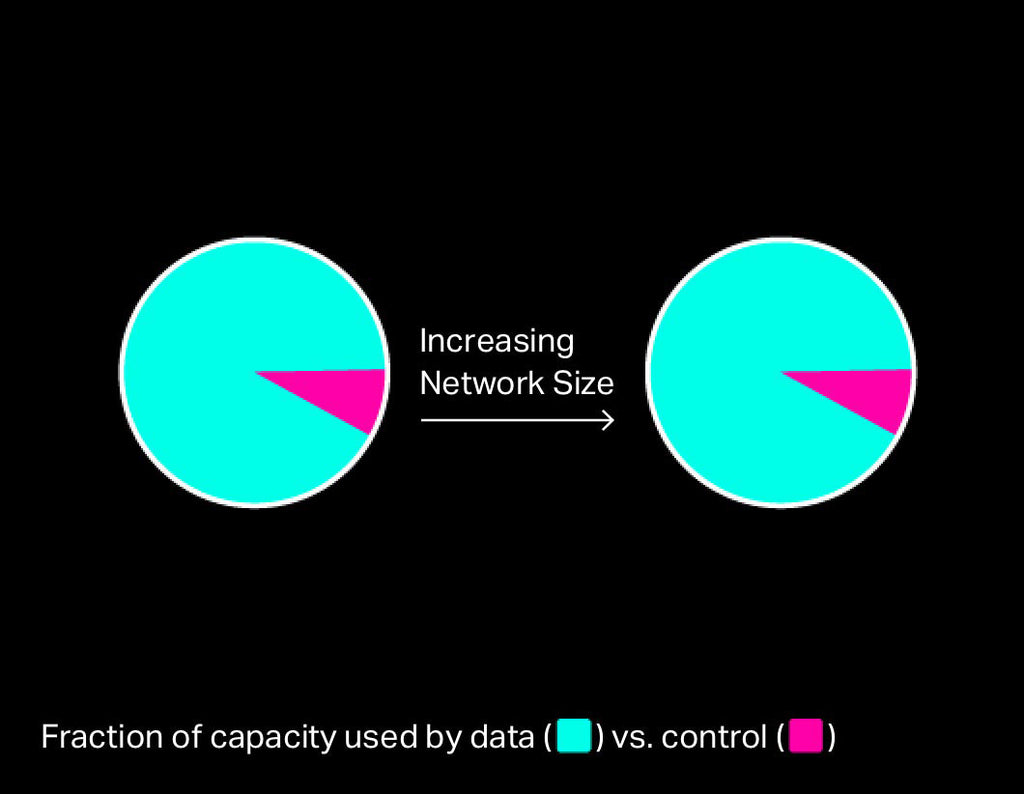Our Mesh Protocol
Scalable networking for virtually any device.
Used by military & emergency response professionals, goTenna's Aspen Grove™ makes long-range, short-burst, low-SWaP mobile mesh networking available for everyone. A novel zero-control-packet approach to achieve unprecedented network efficiency.
Mesh networking over the decades.
1960s
ARPANET — Precursor to the internet
1970s
DARPA Packet Radio Network (PRNET)
1980s
DARPA Survivable Adaptive Network (SURAN)
Research on fundamentals of meshing begins
1990s
DARPA GloMo, Small Unit Operations (SUO now SRW)
Mobile Ad Hoc Network “MANET” coined
IETF MANET working group established
Enabler: IEEE 802.1
Startups emerge
Research accelerates
2000s
Early sensor networks
IEEE 802.11s
IEEE 802.16a
Dynamic spectrum access
Community wireless
2010s
Internet of Things
goTenna's mesh network
Quote Carousel
We call our mesh network ‘Aspen Grove’ because aspens are one tree with an interconnected root system. We thought that was an excellent symbol of our interconnected nature without a single point of failure.
What makes goTenna's mesh protocol unique?

Traditional Mesh
Traditional protocols use dedicated control packets.
Overhead increases proportional to size, leaving little room for data in low-bit-rate networks.

Aspen Grove Mesh
Aspen Grove™ utilizes information within data packets in place of control packets.
Overhead growth is contained, allowing dramatically higher scalability, improved packet delivery, and improved battery life.

Traditional Mesh
Traditional protocols use dedicated control packets.
Overhead increases proportional to size, leaving little room for data in low-bit-rate networks.

Aspen Grove Mesh
Aspen Grove utilizes information within data packets in place of control packets.
Overhead growth is contained, allowing dramatically higher scalability.
What makes goTenna's protocol
scale better?
The key benefits of the Aspen Grove protocol set apply to many types of wireless or wired communications. Today, Aspen Grove is implemented in the Pro X Series products to promote the scalable distribution of low-bandwidth information. These data types include SMS, PLI, map objects, voice messages, low-resolution images, and sensor information.
This is achieved on considerably narrow bandwidths of less than 25 kHz, roughly 1/1000 the bandwidth used by other mesh radios, and 1/5000 the bandwidth used by many WiFi systems. Aspen Grove will continue to provide efficient networking for low-bandwidth information types while also expanding to support high-bandwidth information for novel systems.
Product Carousel
What can you do
with goTenna running Aspen Grove?
Our goal is to make everyone geographically and situationally aware. To see how Aspen Grove is used operationally, visit our goTenna Pro X2 page.
Explore goTenna Pro X2Aspen Grove FAQs
Yes, there are several other protocols for mesh networking. Some better-known ones are AODV (Ad Hoc On-Demand Distance Vector) and OLSR (Optimized Link State Routing), and B.A.T.M.A.N (Better Approach to Mobile Ad Hoc Networking).
There are many reasons, but the two primary ones are as follows. First, most well-developed mesh networking protocols are designed for unicast (one-to-one) traffic, whereas goTenna use cases are overwhelmingly broadcast (one-to-many). Second, goTenna devices trade radio bitrate for best-in-class range and super-low cost, and existing protocols scale poorly at these rates.
There are a lot of differences, but the key one is that all other mesh networking protocols -- other than naive flooding -- use control packets. The actual data packets (which contain information like the text content) then use the information derived from control packets for routing. Aspen Grove is a zero-control-packet protocol, which means it does not use any control packets. As a result, Aspen Grove scales better in low-bitrate networks.
Yes, Aspen Grove fully accommodates the mobility of nodes.
Aspen Grove can be roughly partitioned into four main components: (a) broadcast and unicast routing of messages over the mesh network; (b) efficient sharing of the channel; (c) managing the sleep-wake cycle of devices, and (d) managing end-to-end retransmissions and for reliability. Note that applications, end-to-end encryption, and key management are NOT part of Aspen Grove.
Aspen Grove has two protocols at the network layer, ECHO and VINE for broadcast routing and unicast routing respectively. At the MAC layer it currently has a protocol called G-CSMA (goTenna Carrier Sense Multiple Access) which will be replaced by SPIN (Slot Pinning), as well as a sleep management technique. It will have a transport layer protocol for segmentation, reassembly and retransmissions (similar to TCP but simpler).
Although it is fairly different and innovative, Aspen Grove borrows several tried-and-tested ideas from decades of mesh networking to put together. In other words, it “stands on the shoulders of others” to reach a bit beyond. The Chief Scientist at goTenna has over 20+ years of experience building MANET protocols for the military, and the Firmware Director has 20+ years of experience in embedded systems. Our experience allows synthesis in a risk-free manner. Detailed evaluations and 1+ years of fielding show that Aspen Grove works well.
Currently, yes, but in principle, there is nothing fundamental about Aspen Grove that ties it to a particular device. Most parts of Aspen Grove, except perhaps the sleep-wake cycling part, are portable to other devices as long as they provide a rudimentary interface functionality.
Aspen Grove 1.0 is currently deployed on the goTenna Pro X and contains the ECHO routing protocol for broadcasting (shouts/PLIs), and an efficient lightweight medium access protocol called g-CSMA (g for goTenna). Aspen Grove 1.1 adds the VINE protocol and more improvements to the MAC protocol that we now call g-CSMA (g for goTenna), and many efficiencies to headers and sleep-wake cycling. Aspen Grove 1.2 will add the SPIN protocol at the MAC layer for significantly more efficient access resulting in hop and size increases.
Absolutely not. 5G and the goTenna device occupy different regions of the capacity-range tradeoff space. Further, 5G requires expensive cellular infrastructure and is centralized, making it a poor fit for public safety, disaster relief and the military where goTenna excels.
Neither. Aspen Grove lives in the firmware of the device. Firmware can be thought of as embedded software that runs in the CPU of a printed circuit board. This software performs mesh networking functions. The board also consists of other components such as a radio frequency transceiver (transmitter + receiver) which is used to send bits over the air. The transceiver is not part of Aspen Grove. Applications (e.g. ATAK) are not part of Aspen Grove.
We plan to support our goTenna customer base with new collaborative mapping features in our native iOS/Android mobile app. These updates will benefit organizations that want access to industry-leading situational awareness tools at a lower price point.
We are providing goTenna Pro X and goTenna Pro X2 customers with an expanded selection of supported software app integrations as well as SDK improvements for third-party developers. These changes will benefit organizations with existing software tools for situational awareness as well as command and control.
We are also developing formal partnerships with complementary cellular, satellite and data radio providers for seamless information-sharing from connected command centers to off-grid operators in the field.
Resources
Read how our mesh networking technology outperforms current industry standards.




